Electric bikes are becoming more popular than ever partly due to the push towards green initiatives and partly due to the rising interest in fitness. Many people who are new to the concept often ask questions like what is an electric bike and how it works.
This article will offer an in-depth insight into electrical bikes and how they are beneficial to you. You will also get to know the technical aspect of these bikes and the components that go into making them.
What is an Electric Bike?

In simple terms, an electric bike is a bicycle with an integrated electric motor. It is also known by many names in different countries, such as electrical bike, electric bicycle, e-Bike, or the shortest of all, eBike. Electric bicycles come in many different variations and types. While these bikes are electrically powered, they still come in the category of bicycles instead of motorcycles or scooters.
Who Invented the Electric Bike?
There are multiple people credited for the first electric bikes out there. The first patent registration for such a bike occurred on December 31 1895, by Ogden Bolton Jr. (US Patent number 552,271). This bike consisted of a 6-pole brush and commutator DC hub motor on the rear wheel.
The first major electric bike was patented by Hosea W Libbey in 1897 (US Patent 596,272). In this design, a double electric motor was integrated within the crankset axle hub.
What is the Difference Between a Normal Bike and an Electric Bike?
While visually an electric bike looks the same as a normal bike with a few add-ons here and there, the functionality of the e-Bike is on a whole different level. The difference is in the way these two bikes function. In normal bikes, the movement is generated by physically moving the pedal of the bike. In an e-Bike, the electric motor assists in the movement by providing a portion of the power to the pedal.
Do You Still Have to Pedal an Electric Bike?
The requirement to pedal on an e-Bike depends on the type of e-Bike you are using. Most e-Bikes provide only a portion of power to the pedal, known as pedal assist. Therefore, pedaling is usually important although the effort to pedal is reduced.
Cyrusher e-Bikes, on the other hand, provide the feature to completely use the electric motor without the need to pedal at all. In case you want to exercise, you can switch to the pedal-only mode or Pedal Assist System (PAS).
How Does an Electric Bike Work?

Electric bikes are meant to help with the movement of the pedal. This feature of the electric bike is called pedal assist. This is done with a motor placed in a structural part such as the rear wheel axle. There is a battery installed that provides the power output to the motor. The transfer of power between the motor and the pedal is done by a drivetrain installed between them.
Electric Bike Wattage and Its Importance
Wattage is a parameter that determines the performance characteristics of an electric bike. Since an electric bike is powered by a battery, battery characteristics such as wattage and amp-hours determine its capabilities. Wattage, in particular, dictates the speed of the electric bike.
By definition, wattage is the amount of electrical power, calculated in units called Watts (W). When you buy a new electric bike, the wattage is listed along with the bike. The wattage listing on the bike is done in two forms- Peak Power and Nominal Power.
Peak Power
Peak power is the amount of power that the battery can supply when the throttle is at its maximum. Peak power is calculated by the manufacturers in an ideal operating environment, which is why during operation the motor power doesn't usually come to this value. This power is also sometimes referred to as the ideal power output.
Calculating peak power is easy. For this purpose, you need to multiply the battery voltage and the rating of the amp controller. For instance, for a battery of 52 Volts with a 15 amp controller, the peak power would be:
Peak Power= 52V x 15A = 780 Watts
Nominal Power
Nominal power is the better criterion to look out for when buying a new bike. The nominal power of an electric bike is the average power that the battery provides during normal operation. This power is generally 75% of the peak power output.
The calculation of nominal power requires the calculation of peak power. In the previous example, we had a peak power of 780 Watts. Since nominal power is 75% of peak power, this value would be:
Nominal Power = 780 x 0.75 = 525 W
Electric Bike Watt-hours and Its Importance
The amp hours of an e-Bike refer to its battery capacity. This determines how long the bike can run before you need to charge the battery again. This rating is provided with the battery when you buy a new e-Bike.
With the Amp-hours rating, you can calculate the watt-hours of the battery. The watt-hours can give you the minutes to which the battery can be expected to run. It is important to not use wattage and watt-hours interchangeably. While the wattage of the e-Bike refers to its power, the watt-hours refer to its battery capacity.
Taking the previous example, in case the 52 V e-Bike battery has a 20 Amp hours battery capacity, the watt hours rating would be:
Watt hours = 52V x 20Ah = 1040 Wh
To calculate the number of hours the e-Bike will typically run, divide the Watt hours rating by the nominal power of the battery. Therefore, in this case, the typical running time would be:
Running Time = 1040 ÷ 525 = 1.98 hours or 118 minutes (1.98 x 60)
Electric Bike Voltage and Its Importance
The voltage of an e-Bike provides the path of power transfer from the battery to the motor. Higher voltage leads to a faster rate of transfer of power from the battery to the motor leading to better performance parameters. Every e-Bike comes with a voltage rating provided with the bike, with common voltages being 48V and 52V. Earlier e-Bikes came with a 36V battery option too, but it has been replaced by 48V due to the benefits of higher voltages.
A higher battery voltage leads to a better transfer of power between the battery and the motor. This provides a longer range to the electric bikes along with better efficiency. This is why 52V electric bikes are a better option than their 48V counterpart. However, if the range is not much of an issue, the 48V battery can be the better option since it is slightly cheaper.
Components of an e-Bike

All electric bikes have the same set of components that make the operation possible. These components are:
1. e-Bike Battery
The battery is the powerhouse of the e-Bike. It stores charge and provides power to the motor which further assists the pedal function. Any given motor can support a number of different batteries, although using the battery recommended by the manufacturers provides the best performance and lifespan.
The battery is a heavy-weight component, which is why it is fastened securely on the bicycle frame. To accommodate for the added weight, the position of the battery is generally around the lower end of the frame.
There are two types of batteries used for electric bicycles:
Sealed Lead Acid (SLA) Batteries
SLA batteries are an improvisation of lead-acid batteries, a very old battery technology. They consist of lead plates separated by a liquid electrolyte. Due to the sealed nature, there is no need to refill the electrolyte, and fewer chances of electrolyte spilling.
Lithium Batteries
Lithium batteries are the better battery technology for e-Bikes. These batteries are more expensive than SLA batteries, with the benefits of a longer lifespan and better performance. The tradeoffs are the heavier weight of lithium batteries.
2. e-Bike Motor
The motor is the part that generates the power output for the pedal assist. A motor takes the electricity from the battery and converts it into mechanical motion, similar to the working of an electric fan. The amount of mechanical assistance that the motor provides is variable, dependent on how much power is needed.
The location of the motor can vary on the cycle. Generally, there are three options for electric motor installation:
Rear Hub Motors: Rear hub motors are the most common types of the e-Bike motor assembly. The motor itself is installed on the rear wheel axle and integrated with the gears. Due to the integration with the gears, there is better handling of the bicycle.
Center Motors: Center motor assembly is present in high-end electric bicycles. The motor in this position is attached to the frame and accommodates the center of gravity of the bicycle. e-Bike riders like this assembly because of the ease of changing tires.
Front Hub Motors: This is a very rare type of e-Bike assembly that has almost become extinct nowadays. In this assembly, the motor is mounted on the front wheel axle. Cheap, entry models sometimes use this motor assembly.
3. e-Bike Sensor
To commit to regulations and ensure the safety of the equipment, there are speed restrictions put on the motor assembly. The sensors accomplish this job by constantly monitoring the e-Bike's speed and turning the motor throttle off when the speed approaches restricted limits. There are many different types of sensors to achieve this, such as speed sensors and torque sensors.
4. Throttle
The throttle is the component that tells the motor to run and provides power to the pedal assist. It is generally present on the bicycle handle, similar to a motorcycle accelerator. Twisting the throttle tells the motor to run faster, and letting go of the throttle tells the motor to stop.
5. Controller
The controller is an electrical assembly that connects all the electrical components of the e-Bike together. The controller lets the miniature processing units manage the interworking of the various electrical components. The overall operation of the bike depends on the controller and how it is programmed.
6. eBike Frame
The eBike frame is almost the same as bicycle frames and it provides the physical strength and structure to the bike. Modern electric bikes are adopting the step-through frame structure that was originally designed for women cyclists. The step-through frame allows for easier mounting and dismounting from the bicycle, particularly useful for making multiple pitstops.
7. Gear Assembly
The gear assembly involves gears and gear shifters. These parts are the very same used in conventional bikes. On lower gears, pedaling requires less effort which is useful for situations such as uphill riding. Higher gears require more energy for pedaling, but at the same time provide better control over speed. These are good for downhill riding.
8. Brake Assembly
Brakes provide the necessary stopping power to the electric bicycle. Low-end e-Bikes come with rim brakes which are not really adequate for the necessary stopping power. High-end e-Bikes, such as those provided by Cyrush, come with hydraulic disc brakes that are low maintenance and provide instant stopping power.
9. Tires

The tires of an electric bike are the same as the standard bike. There are many tire options available depending on the purpose and terrain. For instance, off-road and mountain climbing require fat tires, present on mountain bikes. Riding on city streets is best with thin road tires. There are also many size options available for eBike tires.
10. Lights and Reflectors
Lights and reflectors are important e-Bike equipment from a safety viewpoint. Modern electric bicycles come with multiple light options such as high-beam and low-beam lights. The purpose of the reflectors is to alert the nearby traffic about your location in night conditions.
11. Display
Cyrusher electric bicycles come with an innovative display that provides you with all the important information you require at the touch of a few buttons. The display has multiple features such as showing your speed, providing the option to switch between different Pedal Assist System (PAS) modes, and displaying the remaining battery and range.
12. Kickstand
The kickstand provides support to the e-Bike so it can stand straight when not being ridden. Good quality kickstands have a better weight-handling capacity and will last longer. It is important not to sit on the e-Bike when it is resting on its kickstand.
13. Bell
The cycle bell is another safety equipment added on each and every e-Bike. The bells in pedal assist e-Bikes are the same as the standard bike counterparts.
14. Suspension
Suspension systems do not come in every electric bicycle. The purpose of suspension is to absorb the shock of impact, such as potholes, speed breakers, and rough terrain.
How to Operate an Electric Bike?
The operation of an electric bike depends on the type of bike you are using. High-end e-Bikes like the Cyrusher products come with all three possible modes. These modes are:
Pedal Only
In the pedal-only mode, the entire driving force comes from the pedaling effort that you put into the cycle. This turns the e-Bikes into standard bikes in terms of effort and operation. This mode is good when you are low on battery or when you want to use the cycle for exercise purposes.
Electric Only
In the electric-only mode, the entire force for driving the e-Bike is derived from the electric bike motor power. Cyclists do not have to put in any pedaling effort for this mode. However, since the motor is doing all of the work, the range of the cycle in this mode will decrease.
Pedal Assist
The Pedal Assist e-Bike mode is also sometimes referred to as electric assist. In this mode, a portion of the power is derived from pedaling while the rest comes from the electric motor. It is the best of both worlds, as it provides the opportunity to exercise for the cyclist while also not requiring as much effort as cycling generally would. It also provides a tremendous range for cycling.
What are the Different Types of Electric Bikes?

There are different designs of e-Bikes, each with its own functionality and battery setup. The four main types of e-Bikes are same as the type of standard cycles. These types are:
-
Mountain e-Bikes: Mountain e-Bikes are the best option for off-roading or riding steep terrains. These e-Bikes come with fat tires and flat handlebars. The seats of these e-Bikes are not very comfortable and riding is done in an upright position instead of the sitting stance.
-
Road e-Bikes: Road e-Bikes are designed for recreational riding on city roads. These e-Bikes can be driven at high speed. They usually have drop handlebars.
-
Commuter e-Bikes: Commuters are good for city riding to and from work, running errands, and other tasks. They are faster e-Bikes with narrow tires having a large radius. The seats of these e-Bikes are comfortable.
-
Cruiser e-Bikes: Cruisers are designed keeping in mind the comfort of the riders. These electric bikes drive best on city streets and pavement. They have wide tires and a well-built suspension system.
What are the Three Classes of e-Bikes?
e-Bikes are divided into three different classes to accommodate the various local laws and define how the e-Bike should be used. These three classes are:
Class 1 Electric Bikes
For class 1 bikes, the purpose of the electric motor and battery is only to provide pedal assist. Once the cycle reaches a speed of 20 mph, the pedal assistance stops too. These e-Bikes are the safest option and are accepted across the globe. However, using these electric bikes can be problematic in bike paths with a speed limit of 15 mph.
Class 2 Electric Bikes
Class 2 electric bikes come with a throttle function that provides power even when not pedaling. However, the power output stops when the cycle reaches a speed of 20 mph. These are a great option for city streets and off-roading. For bike paths, their use may be allowed or prohibited depending on local laws.
Class 3 Electric Bikes
Class 3 electric bikes come with a speedometer attached to the handlebar. The motor provides power till the bike reaches speeds of 28 mph. These types of cycles are generally allowed on city streets and used by riders for commuting.
Pros and Cons of Electric Bikes
Electric bikes have taken the world by storm, so there are certainly many advantages to them. Let us go through their advantages and disadvantages for the average user:
Advantages of Electric Bikes
-
Running Cost: Electric bikes do not consume any fossil fuels. The only thing required is electric power and even that can be stopped when wanted in preference of manual pedaling. This brings down the running cost of e-Bikes significantly, making them a better option than driving to work or using other means of transportation.
-
Range: If you compare e-Bikes to standard bikes, the former can provide a significantly higher range. A standard bicycle allows riders to travel for a few miles before they tire out. However, e-Bikes can go surprisingly farther, with some cycles such as Cyrusher Ranger going for up to 56 miles. The range can be increased even further by using pedal power once the battery runs out.
-
Health Benefits: Many people switch over to cycling from other transportation methods due to the health benefits it provides. However, some cyclists have to stay away as they are unable to meet the strenuous demands of cycling. e-Bikes provide cyclists with an easier way to achieve their health goals without the strain of conventional cycling.
-
Terrain: Certain terrains are exceptionally tough for cycling, such as a steep hill. However, electric cycles can tackle every type of terrain with ease.
Disadvantages of Electric Bikes
While e-Bikes are a win-win situation for most riders, some find certain disadvantages to it such as:
-
Initial Cost: Due to the added cost of battery and motor, the initial cost of riding an electric bike can be higher than a conventional bike. Although, the higher cost does bring more range and convenience.
-
Weight: Electric bikes are heavier than conventional bikes due to the addition of heavy items such as the motor and battery. This is especially true for electric mountain bikes.
-
Charging: Electric bikes require docking to a charger when they run out of juice, which can feel like a hassle.
Benefits of Riding an EBike
-
Improves Fitness Level
E-bikes provide motor assistance but still require pedaling, giving a good workout without overexertion. Studies show riders can reach high heart rates similar to traditional biking but feel less exhausted because the motor assists when it’s most needed, like on hills or during acceleration. This makes exercise easier and more enjoyable, helping riders stay active longer without overstraining themselves
-
Easy to Climb Hills
E-bikes have electric motors that help you pedal, making climbing hills and covering long distances less tiring. This support means you can ride places you might avoid on a regular bike due to difficulty or fatigue. It boosts your confidence on challenging routes and opens up new places for exploration.
-
Share More Family Times
Because e-bikes assist with pedaling, riders with varying fitness can keep similar speeds. This makes group rides more social and fun, without anyone feeling left behind. Families can enjoy rides together, and less experienced riders can build stamina without frustration.
-
Save Time and Money
E-bikes are faster than regular bikes and can beat city traffic. They cost far less than cars for purchase, upkeep, and fuel, and they don’t require insurance or parking fees. This makes commuting and errands cheaper, quicker, and more efficient -
Protect Joints and Reduce Strain
The motor provides help especially when muscles are under strain (like climbing or accelerating), which reduces stress on joints and muscles. This is great for people recovering from injury, older adults, or anyone who wants a gentler ride without losing all the benefits of exercise. -
Clean and Green Transportation
E-bikes produce no emissions while riding and use far less energy than cars. They provide a clean, quiet alternative to fossil-fueled transport, reducing your carbon footprint and noise pollution. Riding an e-bike helps protect the environment while getting you where you need to go. -
Boost Mental Health and Well-Being
Cycling outdoors is proven to reduce stress, anxiety, and depression while improving mood and sleep quality. E-bikes make these benefits accessible to more people by lowering physical barriers and allowing enjoyable cycling experiences regardless of age or fitness level.
How Fast Can an Electric Bike Go?
Class 1 electric bikes stop providing power after 20 mph and Class 3 electric bikes stop powering after 28 mph. Therefore, this is as fast as the electric bikes will go unless you can manually pedal them to faster speeds.
How Long Do Electric Bikes Last?
The lifespan of electric bikes can vary based on how it is used and maintained. Most of the parts of electric bikes are repairable or replaceable. Therefore, if the bike is kept with care, it can last forever. However, many components require repair and replacement throughout their lifetime. In practice, ten to twenty years is a good life for an electric bike. Improper maintenance and factors such as rain can damage the bike and reduce its lifespan considerably.
The lifespan of components like tires, chain, gears, and brakes depends on how many miles the bike is running and how you run it instead of the time you have owned it.
How Long Do e-Bike Batteries Last?
The major thing that riders worry about when thinking of electric bike lifespan is the battery life. The battery is also a costly piece of equipment to replace, and it will require replacement after a few years. The exact number of years will depend on the type of battery you use and how much you use it on your bike. Lithium batteries easily last for more than five years, while SLA batteries might deteriorate after a couple of years.
Are e-Bikes Environmentally Friendly?
An electric bike is just a regular bike with electric power. Therefore, they are one of the most environmentally friendly transportation methods out there. Additionally, eBikes require less maintenance and parts than other alternatives like electric scooters, making them a very green, low-resource-consuming option.
Are Electric Bikes Good Exercise?
- Provide Effective Exercise
Riding an e-bike still requires pedaling, which raises your heart rate and gets your blood pumping, just like a regular bike. The electric motor helps you maintain a steady pace, allowing you to keep going longer and reach workout levels that improve heart and lung health.
- Encourage More Consistent Physical Activity
Because e-bikes reduce fatigue and make rides feel easier, riders often go out more frequently and ride for longer distances. This regular activity yields long-term health benefits.
- Adjustable Workout Intensity
Most e-bikes have different levels of motor assistance. You can choose a low setting for more exercise challenge or a higher setting when you want a gentler ride. This flexibility means you can tailor your effort level as your fitness improves or based on how you feel that day.
- Good for All Fitness Levels and Ages
Because e-bikes make pedaling easier, they are accessible to beginners, older adults, or those recovering from injury who might find regular biking too hard. This encourages more people to stay active and enjoy the health benefits of cycling.

- Promotes Mental Health &Physical Fitness
Exercise on an e-bike releases endorphins, which improve mood and reduce stress. Being outdoors and engaging in physical activity helps clear the mind and enhance well-being. Therefore, long-term cycling can bring both physical and mental health benefits.
Is an e-Bike Worth It?
While an e-Bike can ask for a higher initial spend over a regular bike, the money you spend is definitely worth it. e-Bikes provide the convenience of scooters and motorcycles with the health and environmental benefits of cycling. Not to forget, the extra power, speeds, and range that e-Bike provides over a regular bike without asking for the higher price tags of electric scooters.
How to Choose the Right Electric Bike For Your Needs?

It is always useful to go through an electric bike buying guide if you are thinking about getting one yourself. Some of the things to look out for are:
-
Price
-
Range
-
Speed
-
Battery Life
-
Motor Power
-
Build Quality
-
Type of eBike
-
eBike Class
-
Brakes
-
Gears
-
Suspensions
Where Can You Buy an Electric Bike?
Cyrusher is the best place to buy an eBike in the US. It caters to beginners and enthusiasts alike for getting eBikes and all the required equipment. There are many models and designs to choose from, with a solution for each type of requirement. The cycles themselves are built of rugged parts and branding components such as Shimano gears. Everything comes with a warranty, so there is nothing to worry about.
Conclusion
Electric bike sales have been rapidly rising in recent years, partly due to a push towards green initiatives and partly due to the convenience and health benefits they offer. Electric bikes can be the best solution for commuting, city rides, recreational rides, adventure riding, or just following a daily routine to keep yourself fit. Now that you are aware of everything there is to know about electric bikes, browse through the Cyrusher range of eBikes and get the perfect fit for you.

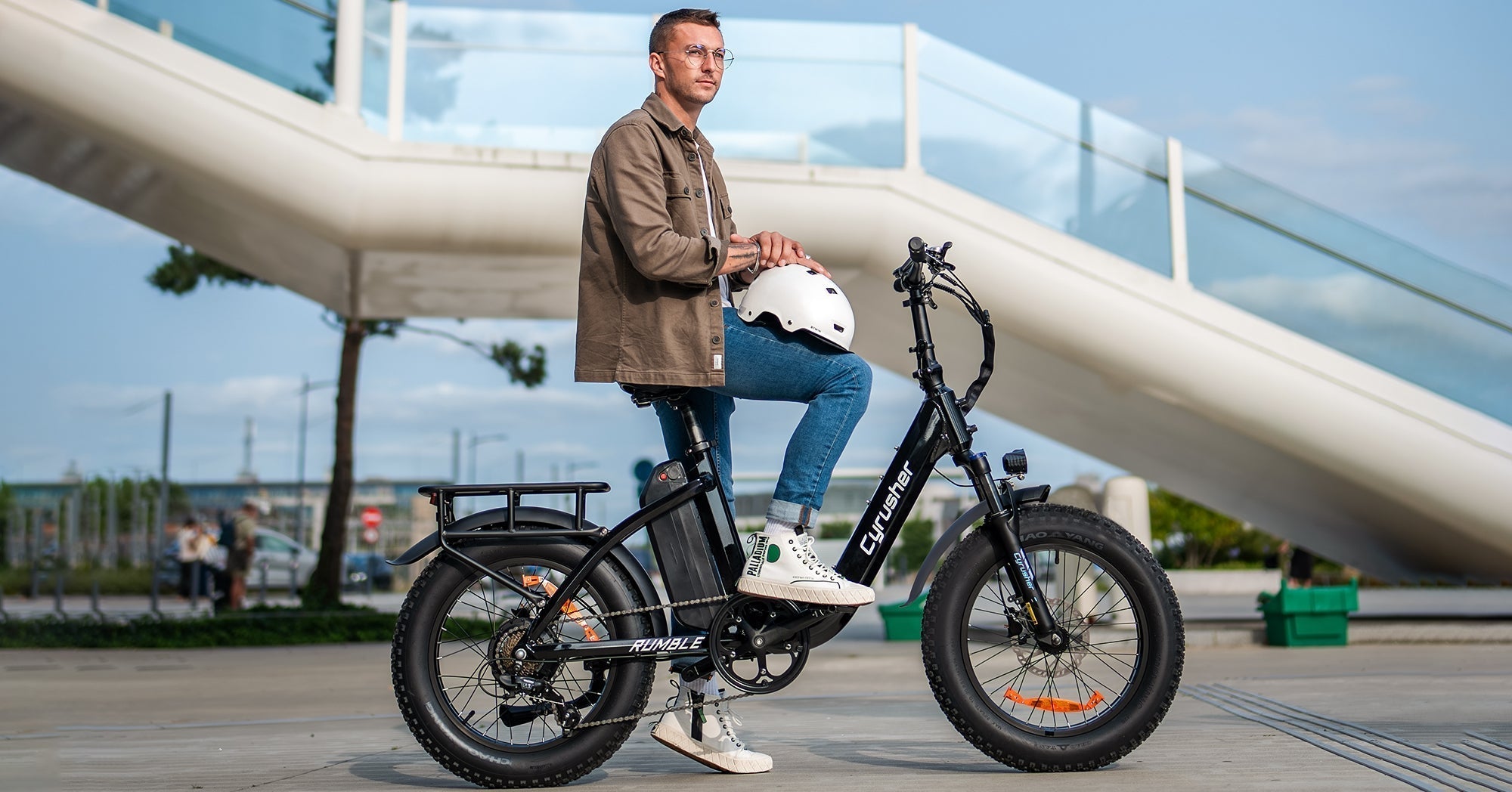
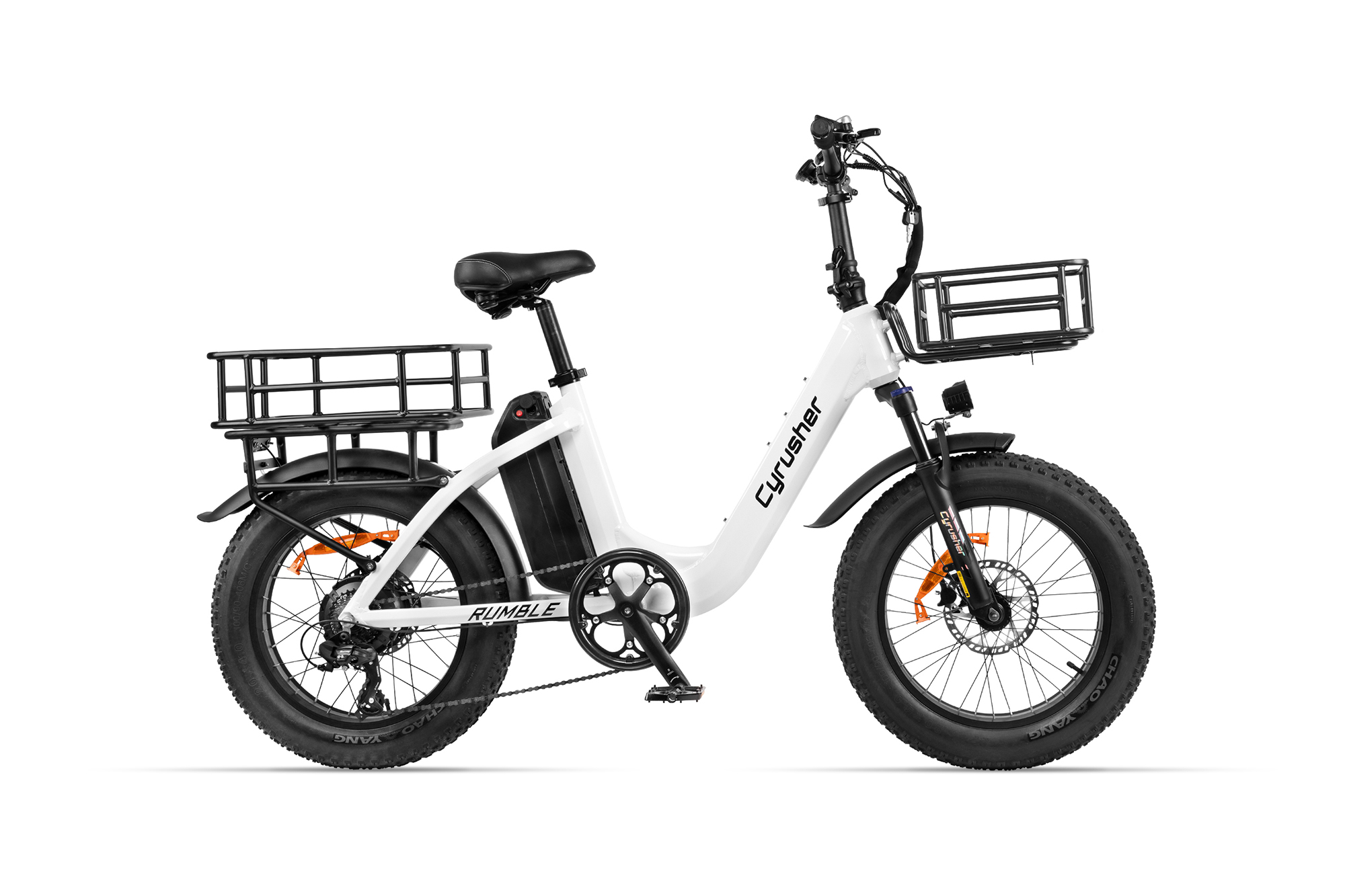

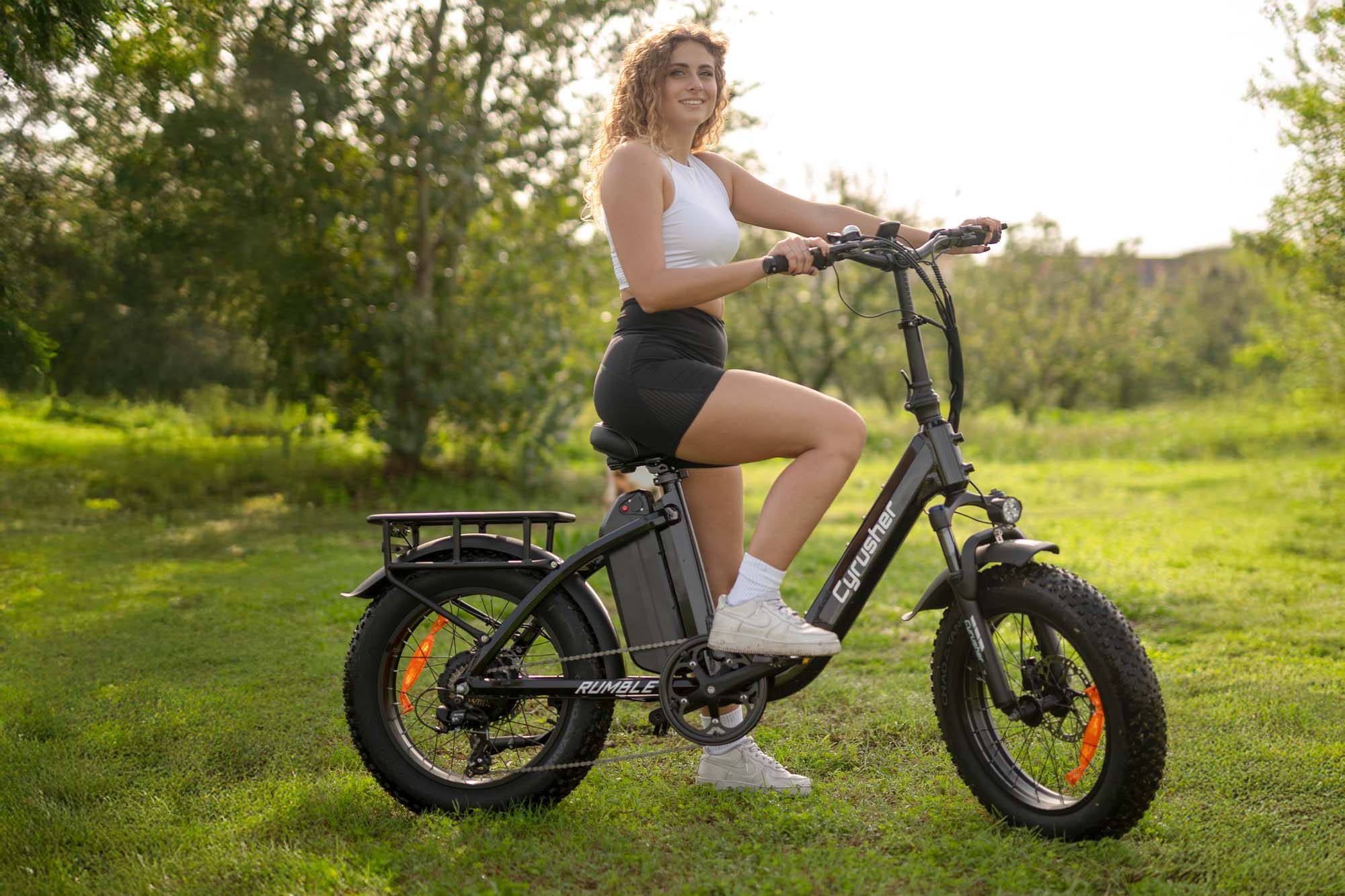
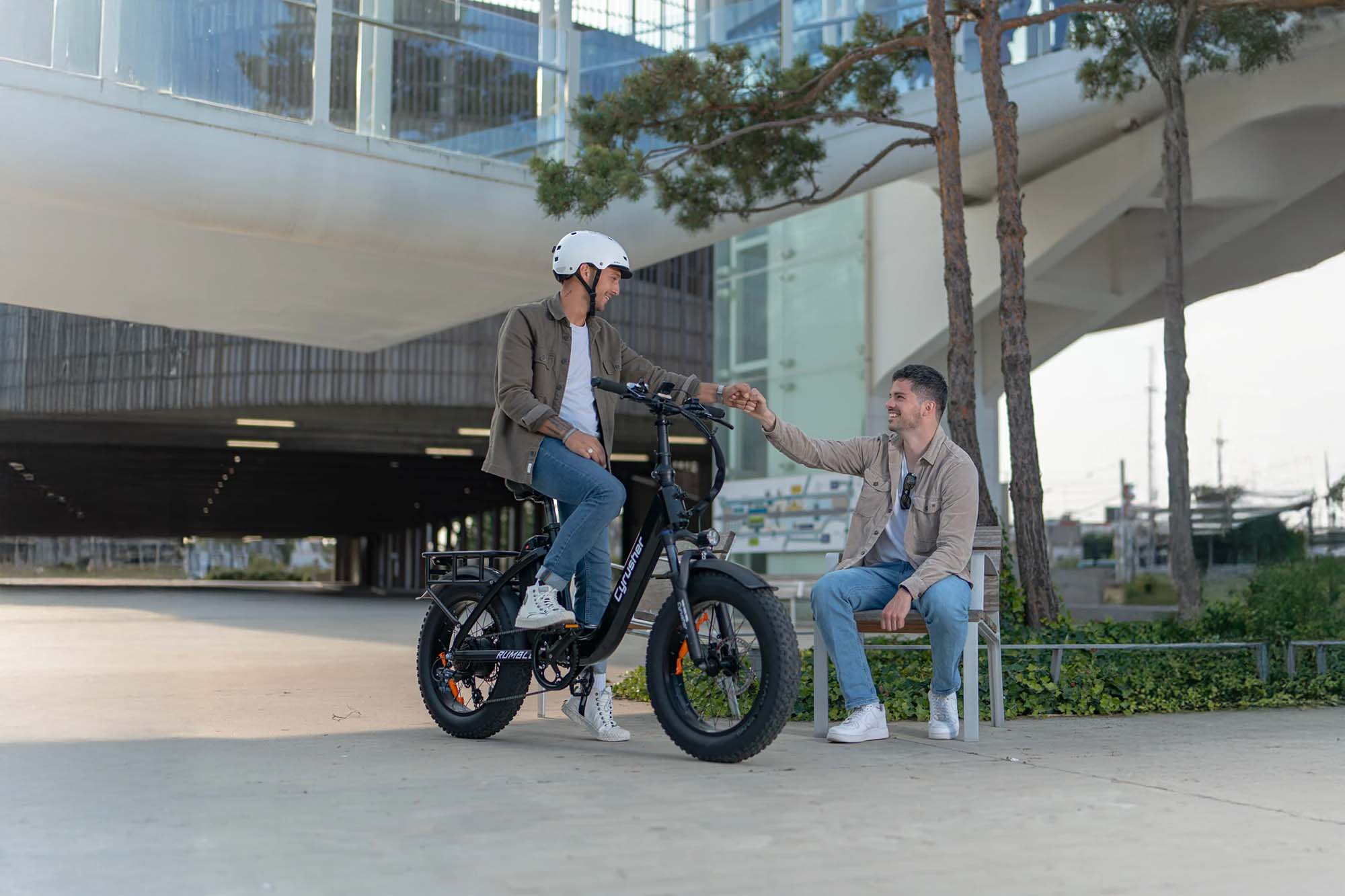
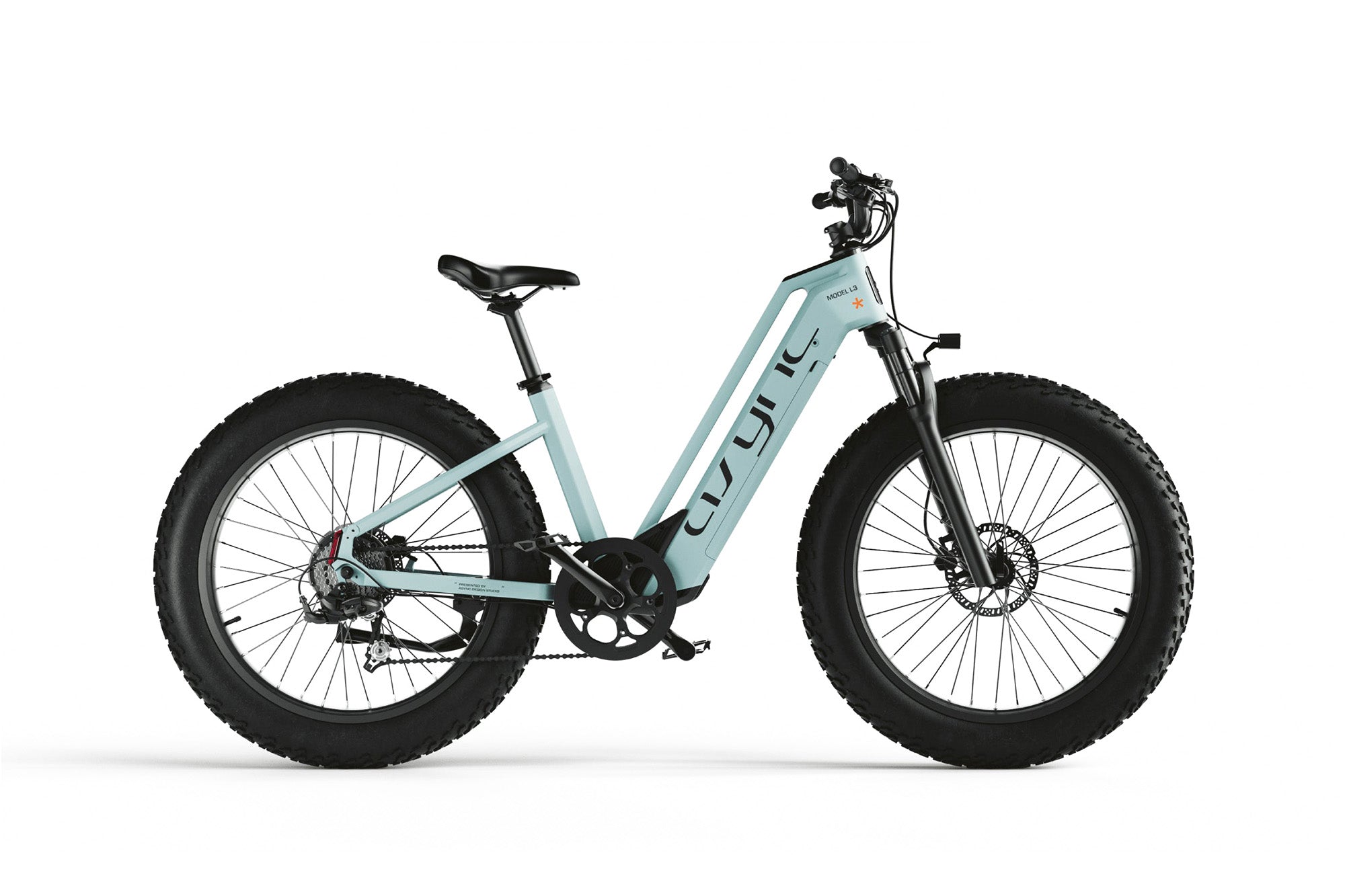
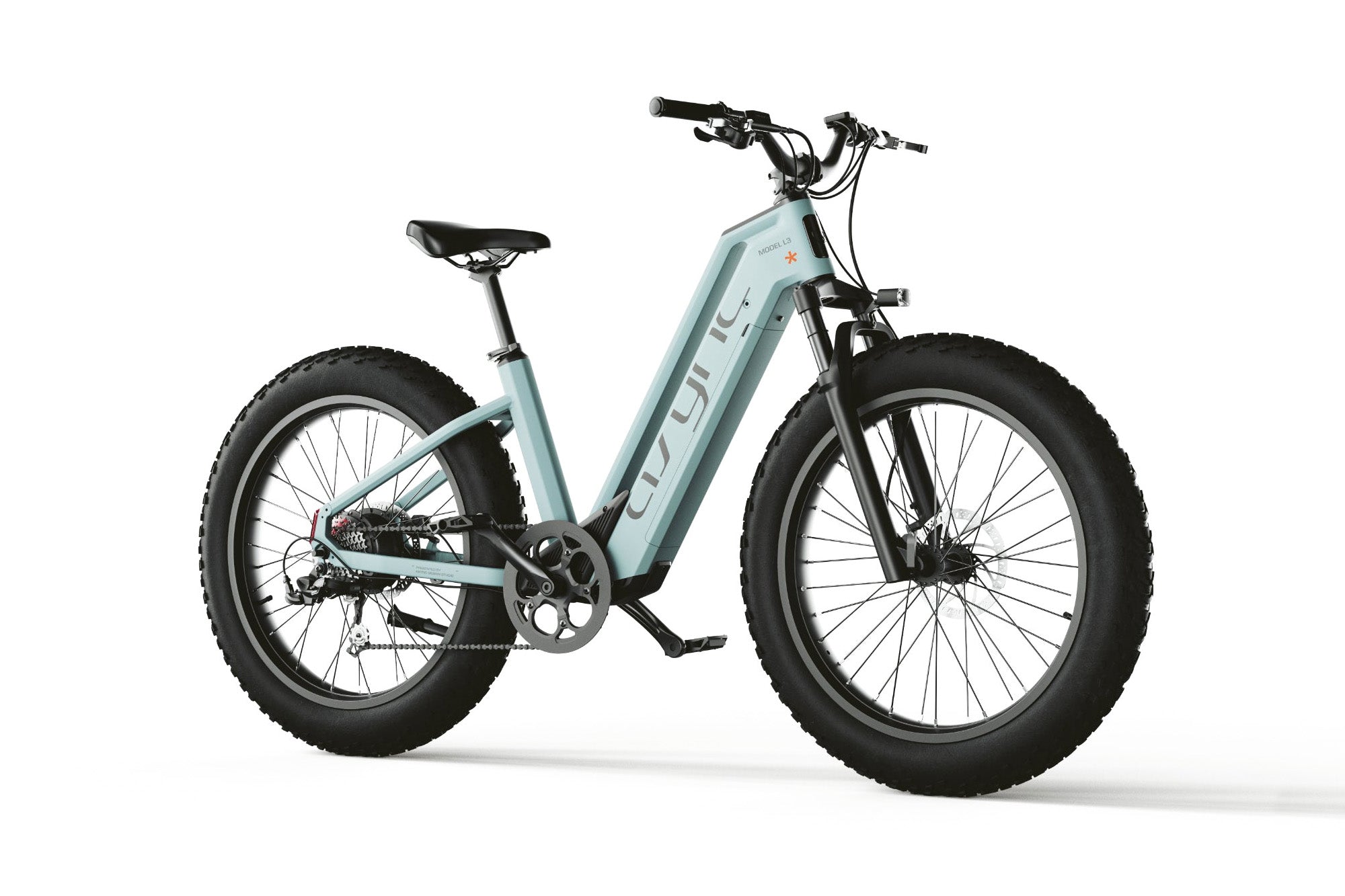
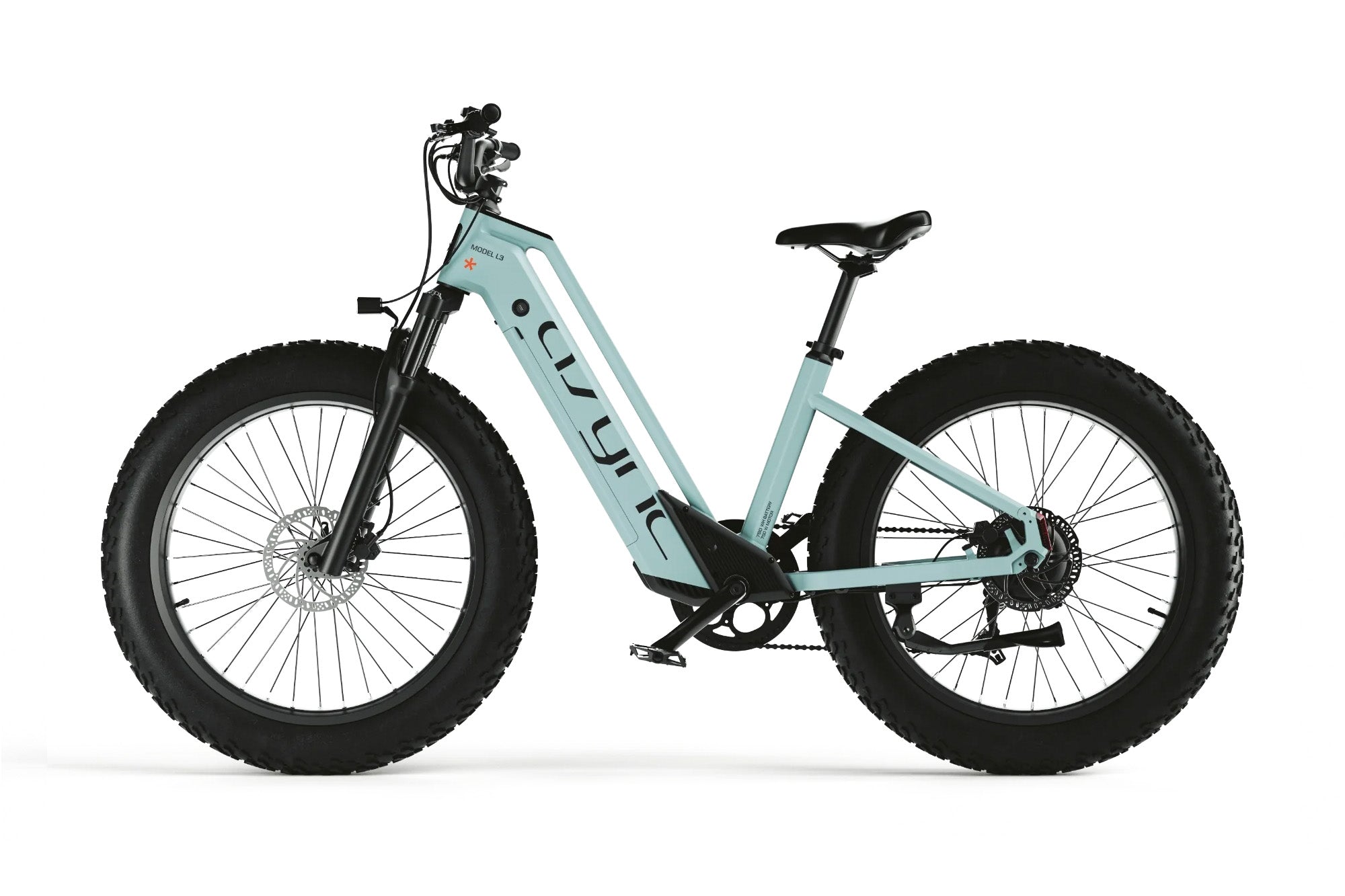
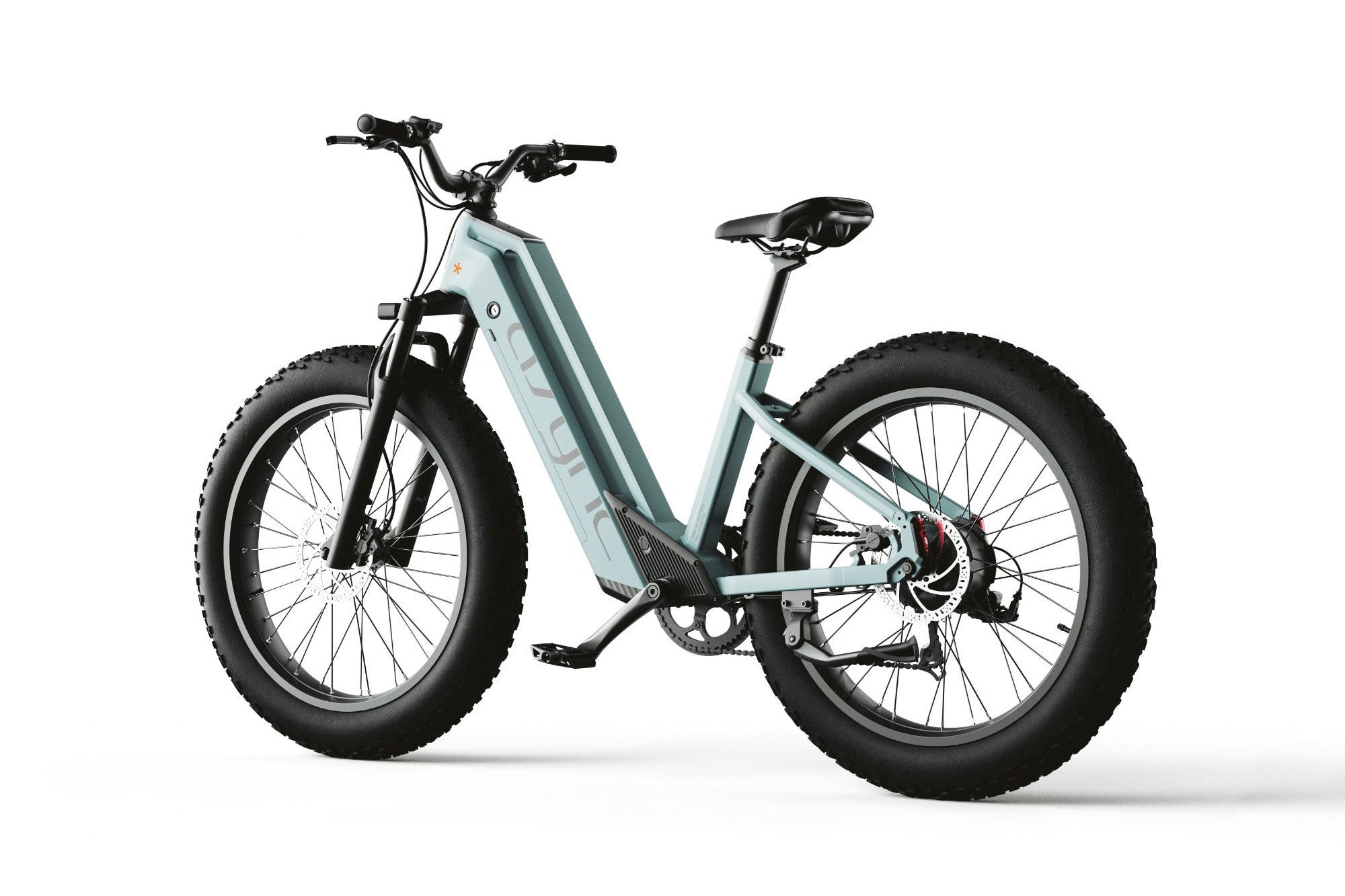
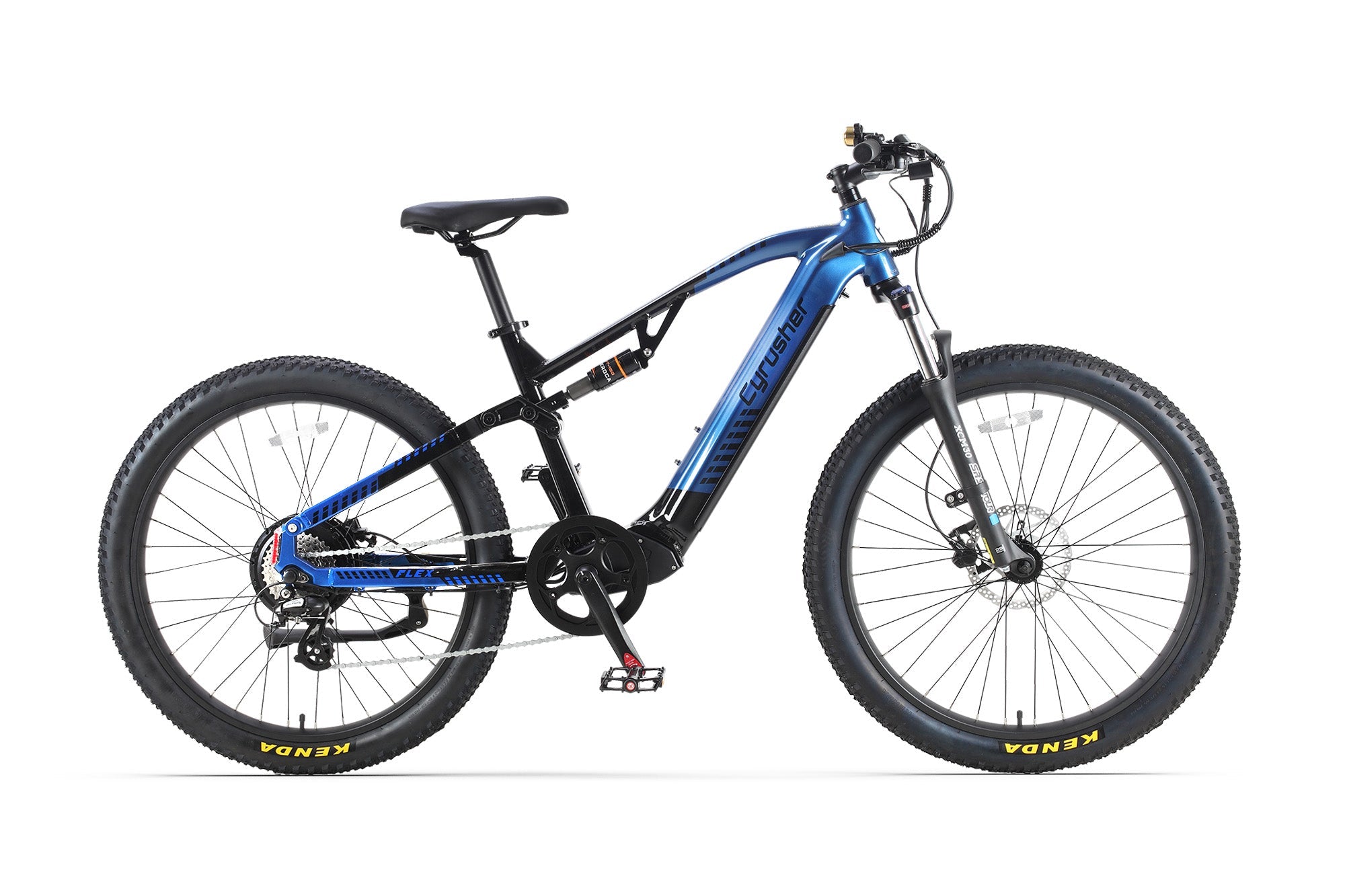
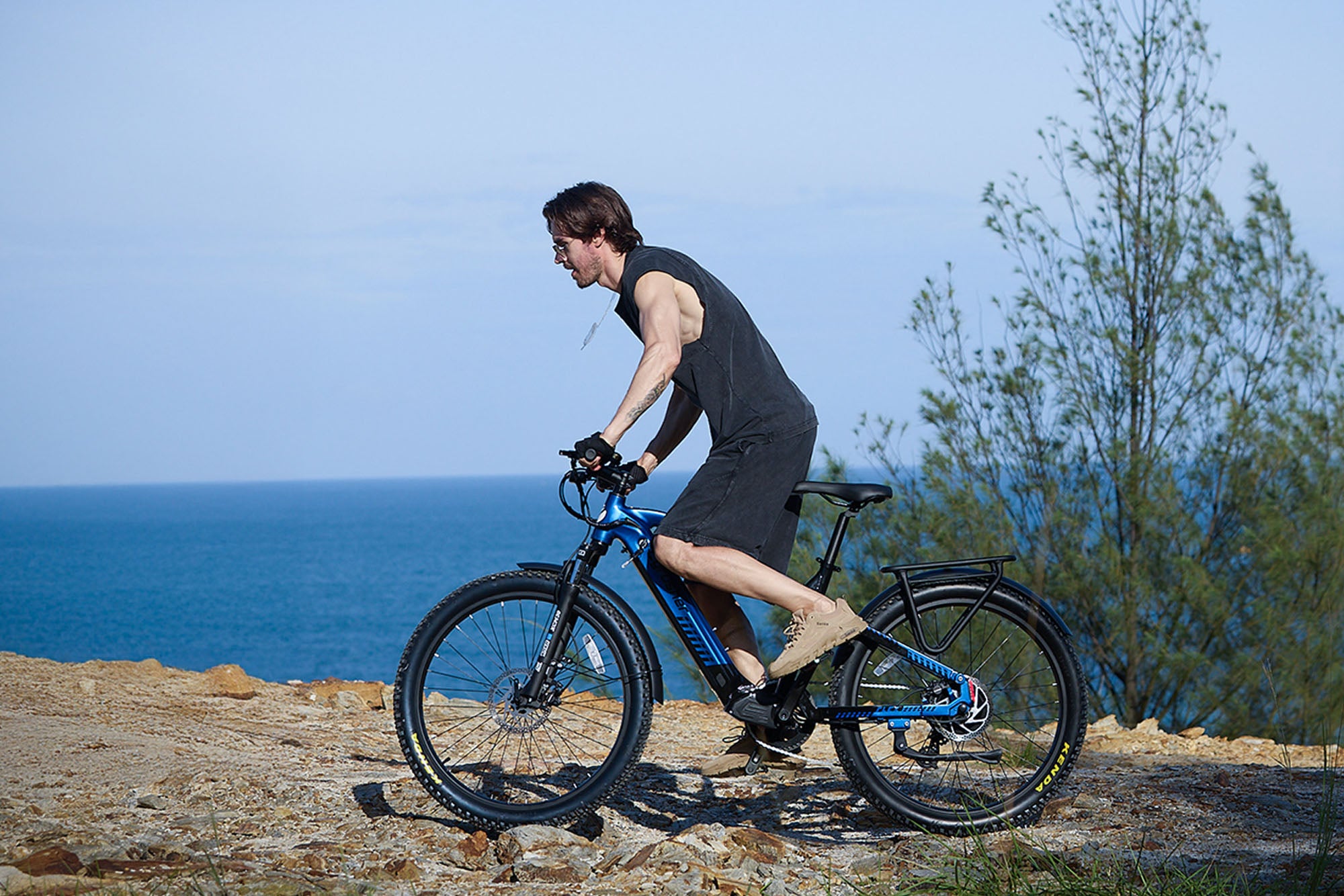
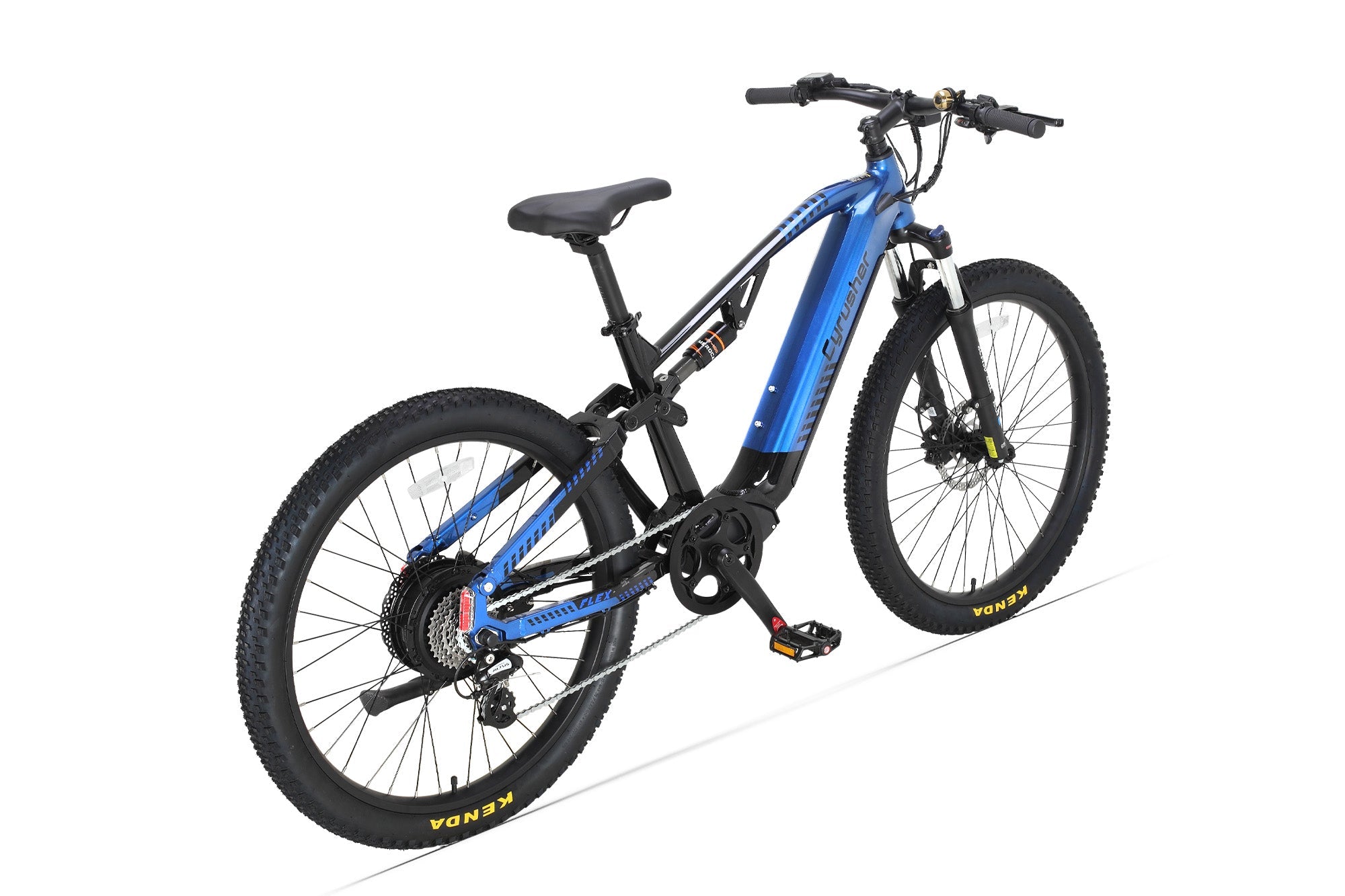
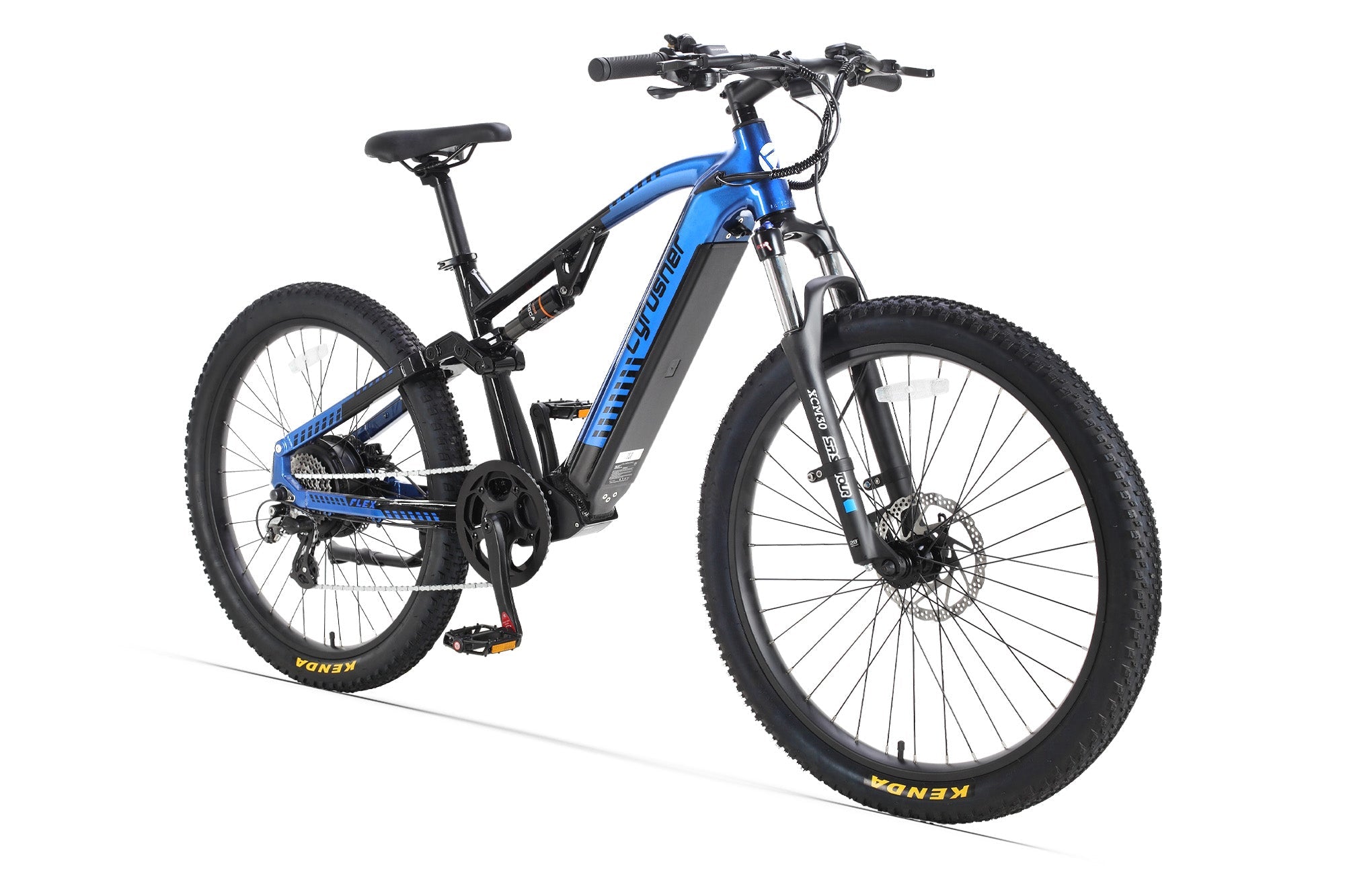
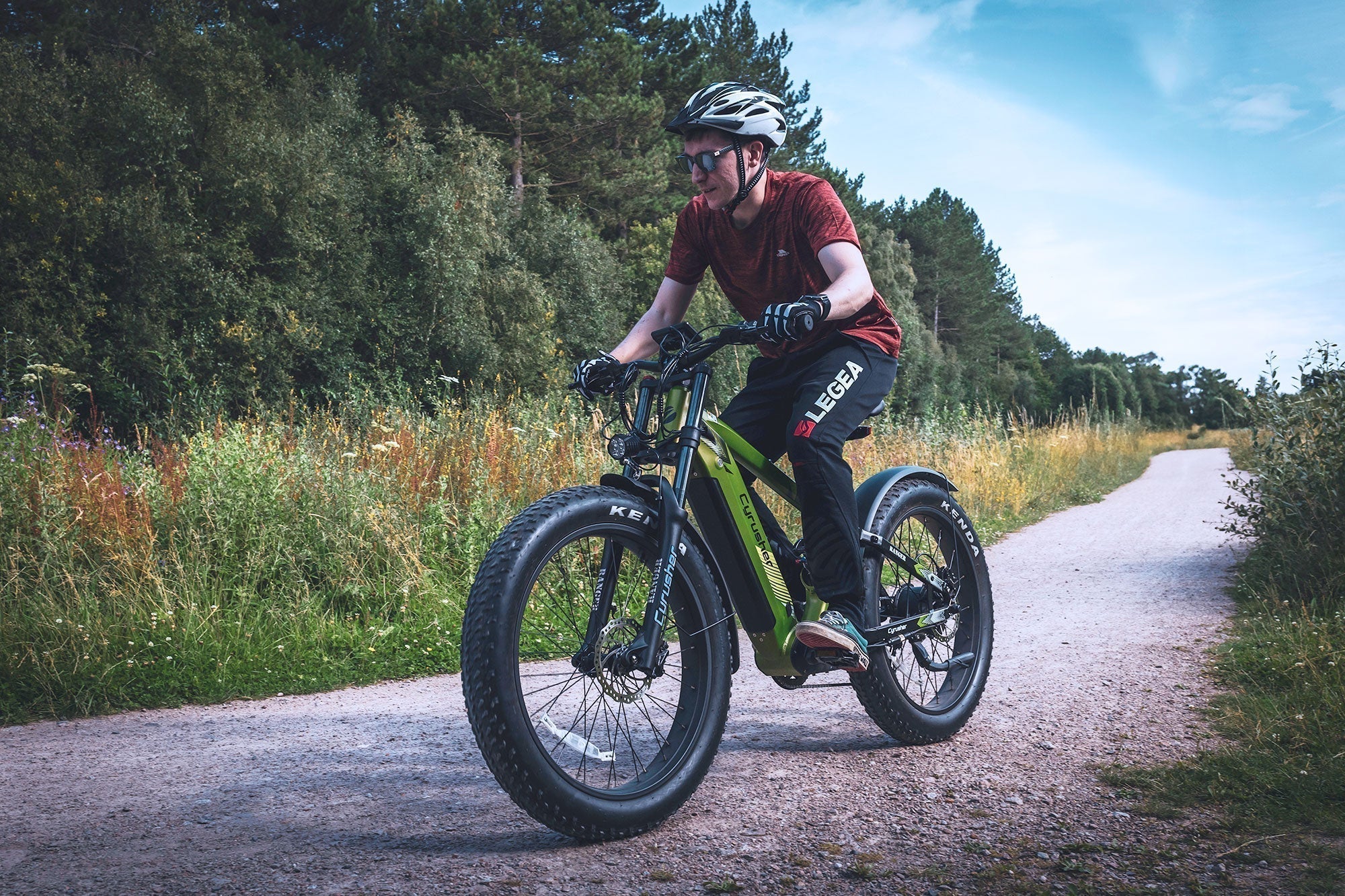
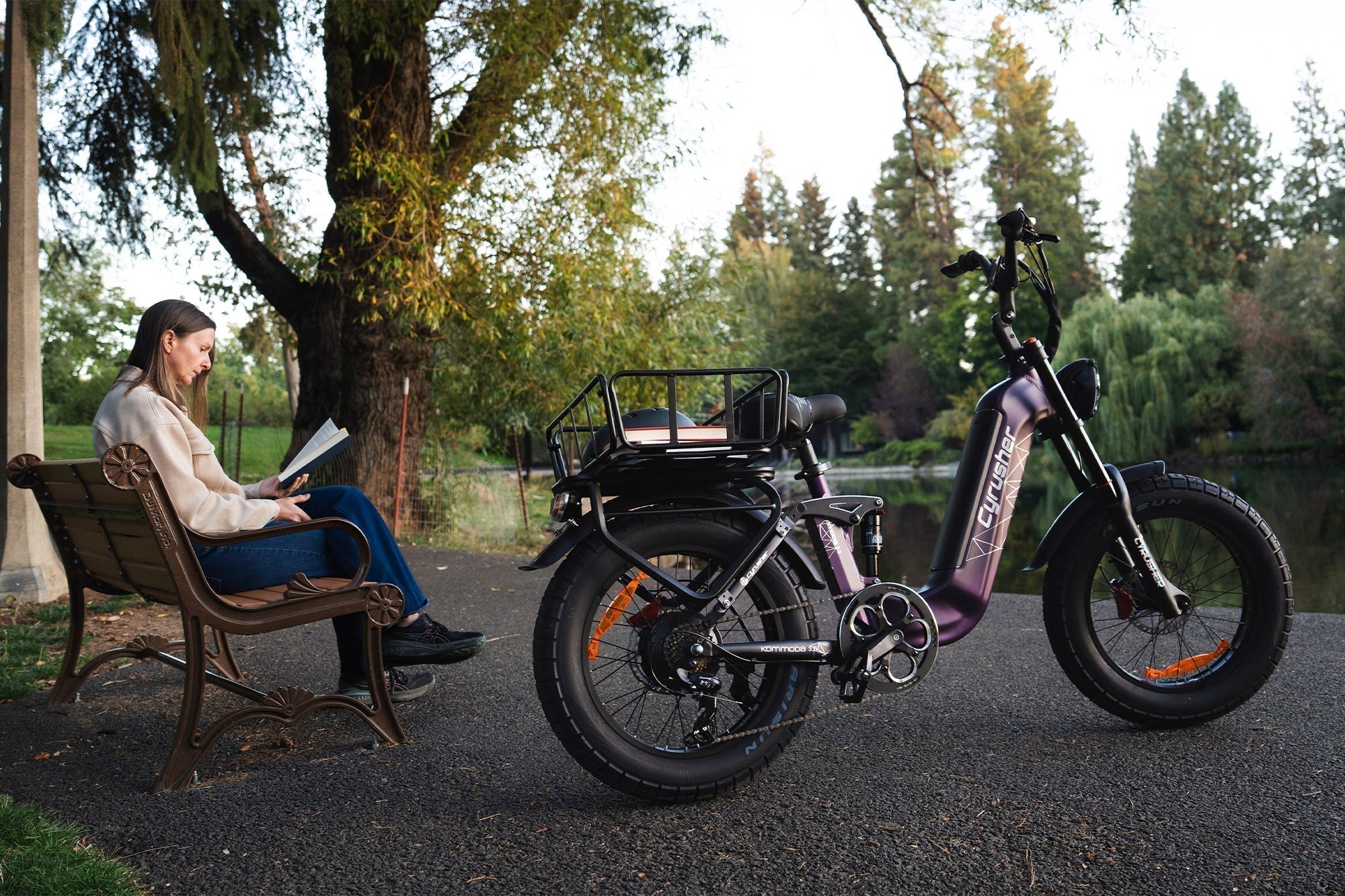
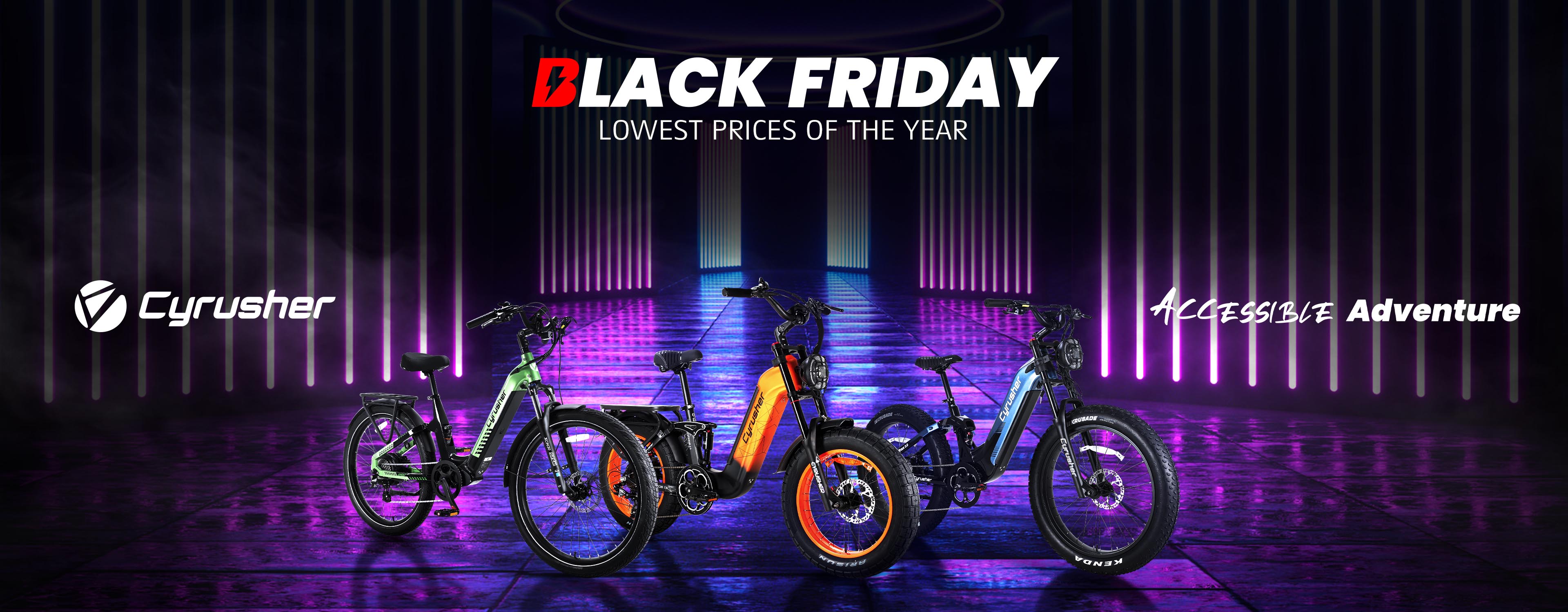
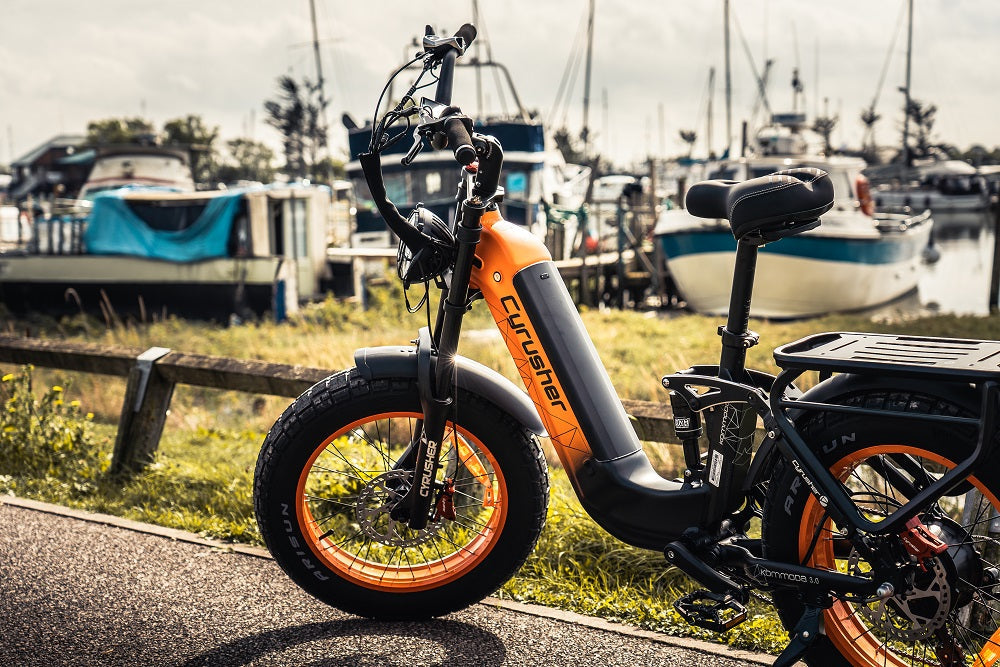


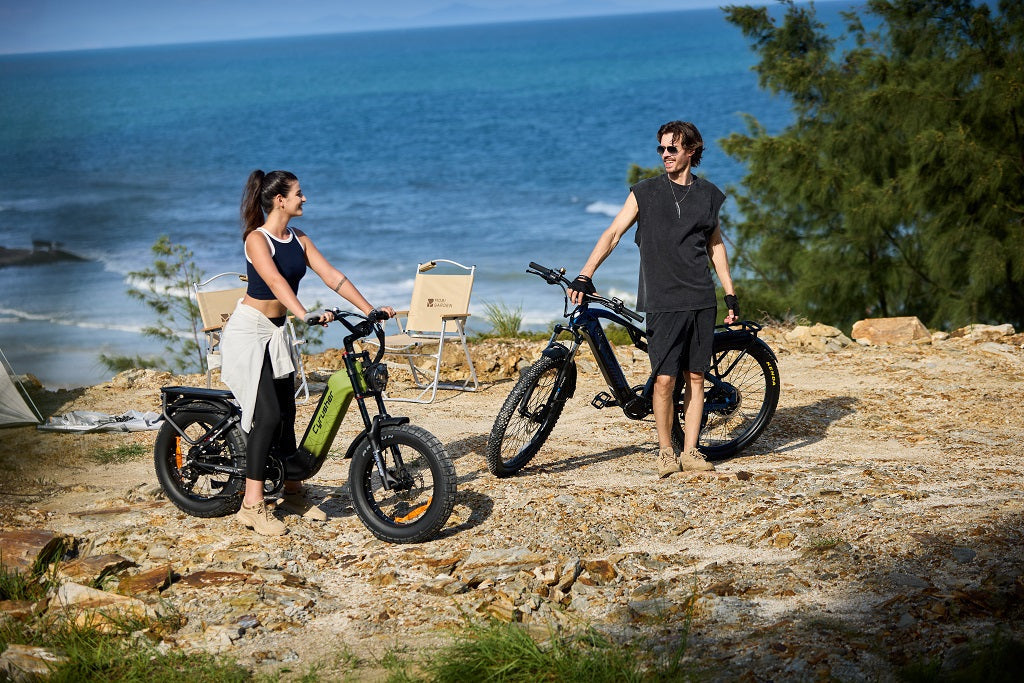
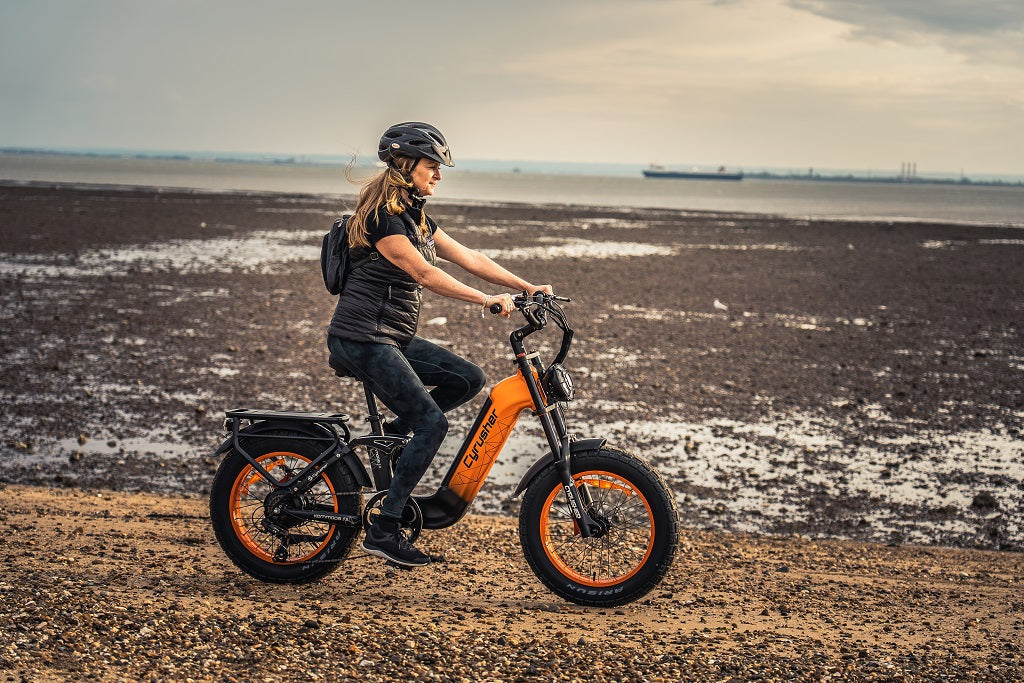
Share:
Electric Bike Showdown: Cyrusher Ranger Vs. SUPER73-ZX
What Are The Different Types of Electric Bikes